Metro Barcelona can be literally called one of the most developed types of municipal transport. With its help you can get to any point not only of the city itself, but also of its surroundings. Despite this, many tourists who come here for the first time, beware of the local subway and call it too confusing and complicated. Is this really so, and can an ordinary traveler understand the scheme of the Barcelona metro?
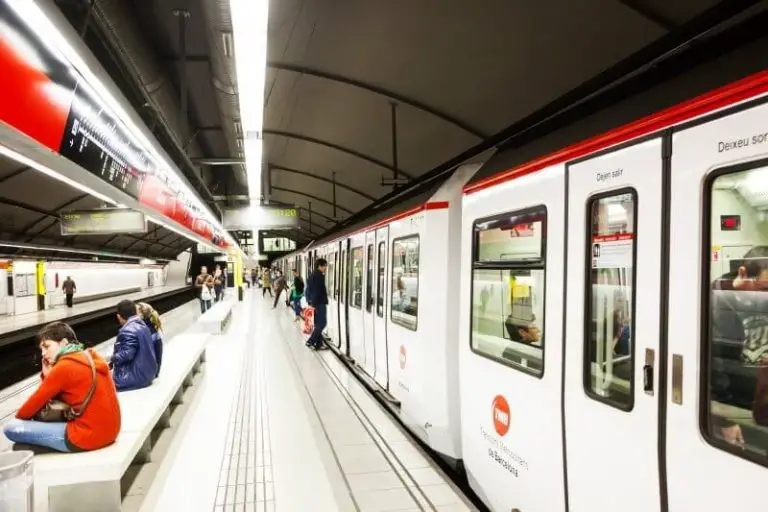
General information
The first line, mapped to the Barcelona metro, was opened by the regional company Gran Metropolitano in the winter of 1924 . At that time, it connected the Plaza de Cataluña with the Lesseps station, and now it belongs to the 3rd line. The second subway line (current L1) appeared almost immediately – literally 2 years later. Its construction, carried out by the rival company Metropolitano Transversal, was timed to coincide with the World Exhibition, held in the capital of Catalonia in 1929. Then, a slight lull occurred in the history of the Barcelona Metro, which lasted until the end of the military conflict between the Popular Front and the dictatorship of Francisco Franco. In 1951, both operators became the property of the city, as a result of which the transport system of Barcelona began to develop at a double pace.
Currently, Metro de Barcelona includes 187 stations located on 11 lines. Their total length is 150 km. With their help, you can move not only around the city, but also beyond its borders (to the Hospitalet de Llobregat, Badalona, Santa Coloma de Gramenet, Sant Adria de Besos, Hospitalet de Llobregat and other suburban villages). And in order not to get completely lost in all this diversity, always carry the metro scheme with you.
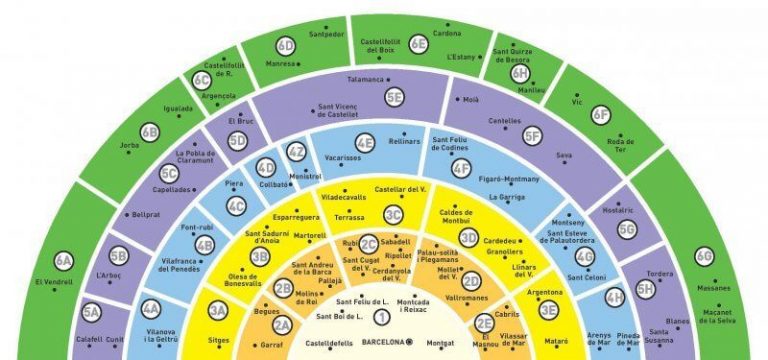
The local subway has several characteristic features, but the most important among them is the lack of children’s tariffs. Instead, there is a special discount system in Barcelona that is valid when buying several tickets at the same time. And one moment! This subway became known thanks to the so-called Spanish solution, the essence of which is the availability of as many as three platforms at the stations – one island and two coastal. Thanks to this design, passengers can enter and exit the car from both sides, which prevents the appearance of a crush and greatly reduces the usual stopping time.
Metro map
When studying the scheme of the Barcelona metro, you will probably notice that it consists of 11 branches that have no names and differ only in color and number:
- L6: Pl. Catalonia – Sarria;
- L11: Trinitat Nova – Can Quias;
- L3: University Zone – Trinitat Nova;
- L10: La Sagrera – Gorg;
- L2: Parallel – Badalona – Pumpeu Fabra;
- L4: Trinitat Nova – La Pau;
- L1: Bellvitge Hospital – Fondo;
- L7: Pl. Catalonia – Avinguda-Tibidabo;
- L5: Cornella Center – Val d’Ebron;
- L9: Airport T1– University Zone, La Sagrera – Can Zam;
- L8: Pl. Spain – Moli Nou-Ciutat Cooperative.
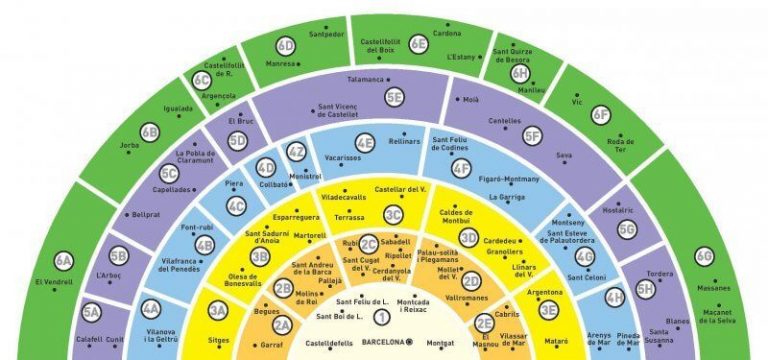
While some of them (L1 – L5 and L9 – L11) are served by TMB , others (L6-L8 and S1-S4) are owned by Ferrocarrils de la Generalitat de Catalunya (FGC). In addition, funicular lines, 2 tram tracks (Trambesòs and Trambaix) and the Spanish railway, which is indicated by the letter R on the general scheme (from the company name – Renfe), are plotted on the Metro de Barcelona circuit. These stations have their own platforms and are most often used for trips to the recreation centers of Salou, Pineda de Mar, Calella and Blanes.
You can change to R trains at one of 4 key stations: Sants main railway station, Sq. Catalonia, El’Prat Airport or El’Cot Arago. It should also be noted 6 areas of the Barcelona metro. The first of them belongs to the city itself, 2 and 3 to the suburbs, 4 and 5 to resort towns.
Hours and Intervals
Opening hours for the metro in Barcelona start at 5 a.m. regardless of the day of the week. The only exceptions are the dates when the stations are open around the clock:
- from June 23 to 24 (the eve of St. John’s Day);
- from August 16 to August 17 (Grace Festival);
- from September 20 to 21 and 23 to September 24 (La Merce Festival);
- from December 31 to January 1 (New Year’s Eve).
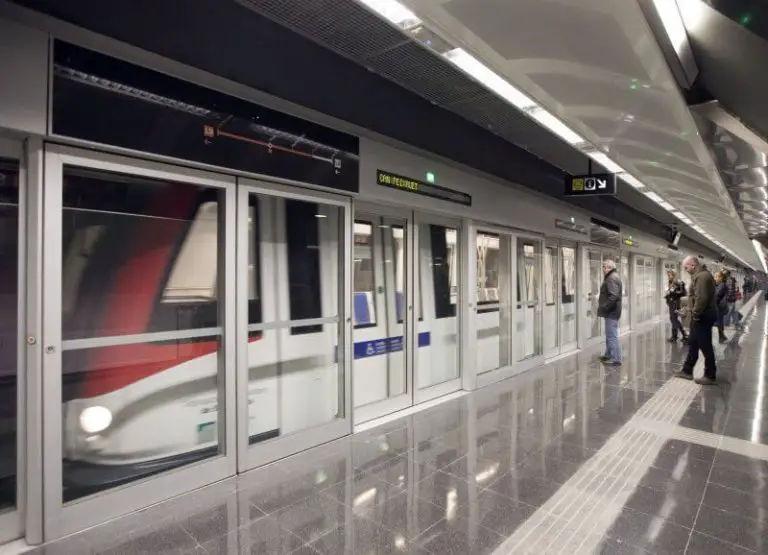
If you are interested in how long the metro operates in Barcelona, use this tip, because the closing time may vary depending on whether it is a weekday or a weekend:
- Monday – thursday: until 00:00;
- Friday and public holidays eve: until 02:00;
- Saturday: round the clock;
- Sunday: until 00:00;
- 12.24: until 23:00.
At the same time, the Mas Blau, Mercabarna and L9 Sud Parc Logístic stations are always open from 05:00 to 00:00. Trains leave every 5 minutes. The stop takes no more than 2 minutes. The transition between the lines will take about 10 minutes.
On a note! Despite the fact that on weekends the subway closes a little later, getting around the city becomes more difficult. This is due to the fact that the frequency of circulation of the compositions increases markedly.
What’s the fare?

The cost of the metro in Barcelona depends on which card you decide to use. Let’s consider only the main ones.
A regular ticket intended for the first trip, by one passenger and on one type of transport. Valid for 1 hour 15 minutes from the time of composting. The price of the card varies depending on the number of zones crossed:
- 1 – 2,20 €;
- 2 – 3,10 €;
- 3 – 4,10 €;
- 5 – 6,7 €;
- 6 – 7.8 €.
On a note! When buying a Single Ticket in the subway, you can use both underground and ground transportation. If you buy a ticket from the bus driver, but you can only ride on it, although the price will be the same! In addition, it can not be reached from the airport to the city and back.

The T-10 map includes 10 intermodal trips and covers all 6 transport zones. At the same time, several passengers can use it at once. The main thing is to lower the ticket to the validator the appropriate number of times. When traveling within one zone, the cardholder has 75 minutes during which he can transfer from one type of municipal transport to another. At the intersection of each subsequent zone, this period increases by a quarter of an hour. The date and time of landing are indicated on the back of the coupon at the time of composting.
The main advantage of the T-10 travel card is that it does not have a validity period. The only drawback is that you can ride the subway only 1 time during this time. This means that if, before the end of the indicated period, you board the car again, they will write off another 1 trip from you.
This option is perfect for those who plan to stay in Barcelona for 2-3 days. As for the cost of the T-10 card, it depends on the number of zones crossed:
- 1 – 10,20 € (it is enough to get acquainted with the main city attractions);
- 2 – 20,10 €;
- 3 – 27,40 €;
- 4 – 35.25 €;
- 5 – 40,50 €;
- 6 – 43,05 €.
On a note! The T-10 Pass does not operate on the L9 Sud line, as well as Aeroport T1 and Aeroport T2 stations.
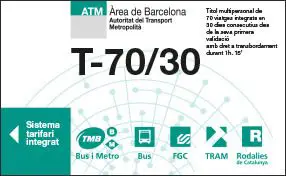
It is a complete analogue of the T-10, differs from it only in the number of trips (in this case there are 70) and a limited validity period (30 calendar days). In addition, with such a card you can safely ride between the airport and the city. Such a ticket costs 60.90 € per zone.
It is necessary in order to get from the city to Aeroport de Barcelona – el Prat and back, as well as to move between its two terminals. This card only applies to the subway. Further, it all depends on the scheme of your route – if it is planned to transfer to a bus, you should buy a T-10. This will allow you not to overpay for a one-time ticket. A one-way trip with Airport Ticket costs € 4.60.
On a note! When buying this card, do not forget to check whether the time of your arrival in the city coincides with the moment the metro closes, because if you arrive late at night, you simply cannot use it.
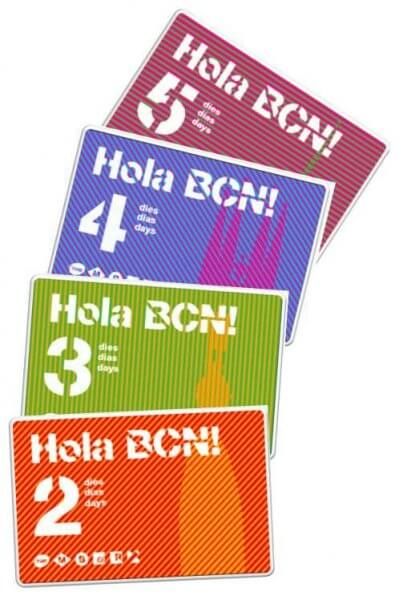
Designed for a certain number of days – 2, 3, 4 and 5 days. They allow you to ride on any type of municipal transport, except, perhaps, a tourist bus. The validity of such travel starts with the first trip. Cards that have not been activated are canceled on the last day of February of each year.
Their cost is:
- 48 hours – 15 €;
- 72 hours – 22 €;
- 96 h. – 28.50 €;
- 120 hours – 35 €.
On a note! These types of passes cover all the lines of the Barcelona Metro – including L9sud, which connects the city with the airport.
An individual travel card designed for 50 trips and providing for any number of free transfers from one type of transport to another within 75 minutes from the moment of activation (as in other cases, when crossing different zones, this time increases by a quarter of an hour). Allows you to move between the city and Aeroport de Barcelona – el Prat. It has a limited validity period of 30 calendar days. If the card is used within 1 zone, then you will have to pay € 45.50 for it.
A monthly ticket entitling you to an unlimited number of trips for one month. It is used in a strictly individual order. Valid for L9 Sud line (Art. Aeroport T1 and Aeroport T2). The price of such a ticket is 54 € for 1 zone.
On a note! When using T-Mes, you need to have an identity card with you (national or issued by operators of the integrated fare payment system). In this case, the number of this document should be printed on the travel card itself.
You can get acquainted with all types of cards and fares on the page: https://www.tmb.cat/en/barcelona-fares-metro-bus/single-and-integrated/choose-ticket
Where and how to buy a ticket?
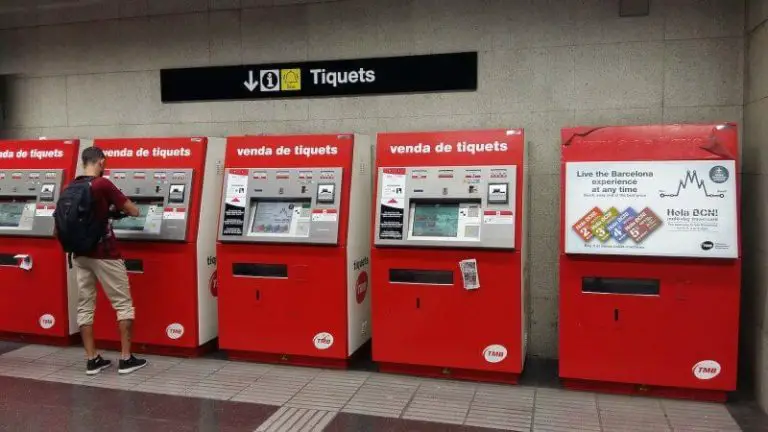
There are very few typical ticket offices in Barcelona, so to buy a card you need to look for a machine (it can be of different colors, but most often there are red or yellow). Using Tiquets is easy:
- Choose your preferred language – French, Spanish, English or Catalan. But even if you do not know any of them, do not worry – these machines have a very convenient and intuitive interface;
- Pick a ticket type. As a rule, the most common option is installed on the screen by default. If it does not suit you, click on the “Other” button;
- Enter a payment method – by card or in cash;
- Mark the desired zones;
- Indicate the required number of tickets;
- Wait until the final amount (in euros) appears on the screen;
- Pay for the ticket – machines accept both bills and coins. Change is also issued.
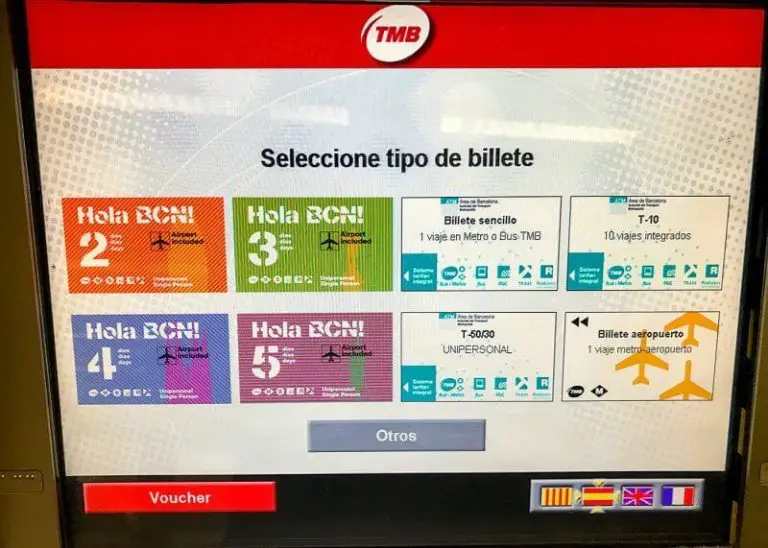
On a note! You can buy a ticket or a pass at information centers or customer service points.
Barcelona metro – how to use?
If you do not fully understand how to use the metro in Barcelona and read its diagram, take note of a few useful tips:
- Having gone down, go to the turnstile with a green arrow;
- Insert the ticket into the yellow receiver – it will not only check the availability of paid trips, but also print their date and time. As for trams and buses, their composters are right in the lounges;
- Wait for the lock to be released and follow the apron;
- Detailed maps, schemes are at every stop. To go to the desired station, follow the signs. Transitions in the opposite direction are almost everywhere;
- A travel card or card must be stored until the end of the trip;
- Checking tickets by controllers is carried out either on the platform or in the car itself;
- The penalty for stowaways is 100 €. With instant payment, you can save up to 50% of this amount. Penalties apply to those who have forgotten or did not consider it necessary to pass the ticket through the composter;
- You can find the entrance to the subway in the red letter “M” enclosed in a white rhombus;
- You do not need to fold or fold the card several times – otherwise the control device simply will not miss it;
- If the travel card is demagnetized for any other reasons, replace it with the metro workers. All remaining trips are protected at the same time.
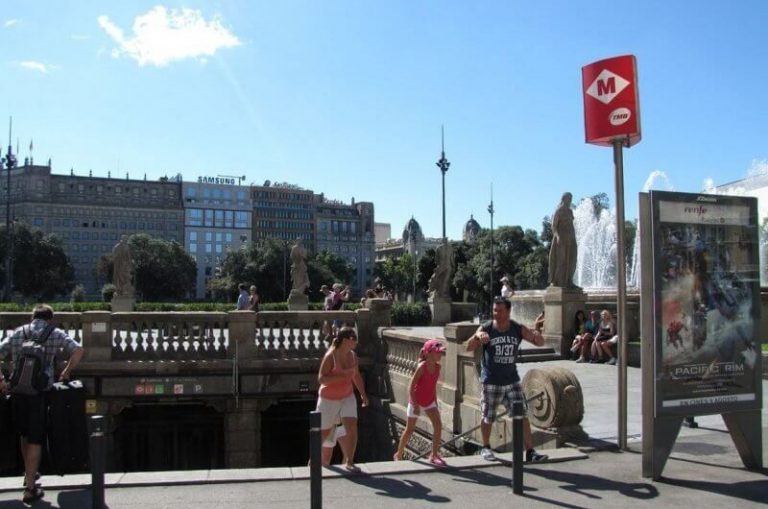
On a note! When studying the subway scheme, do not confuse the subway lines with the lines of regional trains.
Prices on the page are for November 2019.
Useful Tips
If you are going to take the Barcelona metro, pay attention to several important nuances:
- In order to get into the car, you need to press the green button located on the front door. Only after that they will open, and you can enter inside. Exit the wagon in exactly the same way. By the way, in old compositions the role of a button is played by a special lever.
- If you don’t have a metro scheme with you, take a look around – on the Metro de Barcelona platform you can see not only a map of the line you are currently on, but also signs of attractions located in the immediate vicinity of the station. In addition, there is information about which direction you should move in order to go next to the place you need.
- After composting a ticket, do not be lazy to check the number of written-off trips. The fact is that the turnstiles in this subway periodically “hang” and can fix incorrect information.
- After the subway closes, you can only move around the city by taxi or night bus.
- When trying to figure out a subway pattern, don’t forget to keep a close eye on your things. To avoid becoming a victim of pickpockets, carry a backpack on your chest and not behind your back, do not keep your wallet and mobile in your pocket, and place the bag so that it cannot be cut.
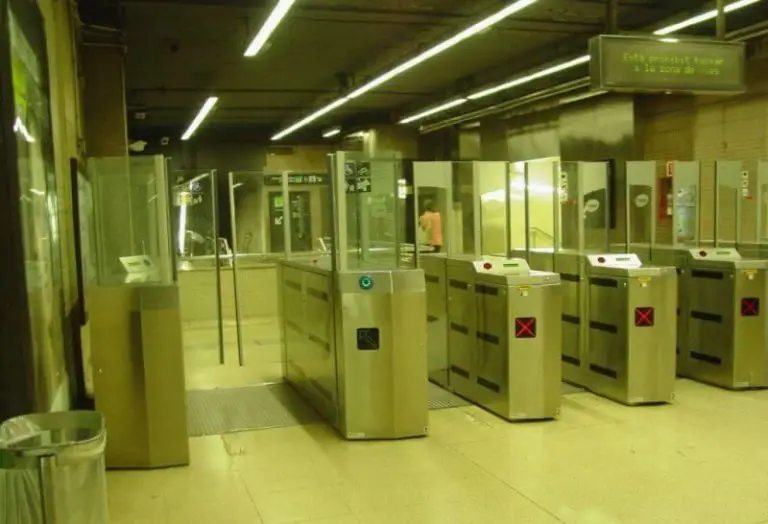
How to buy a ticket for travel in the Barcelona Metro in a vending machine – video instruction.
Posted by: Olga Sheyko